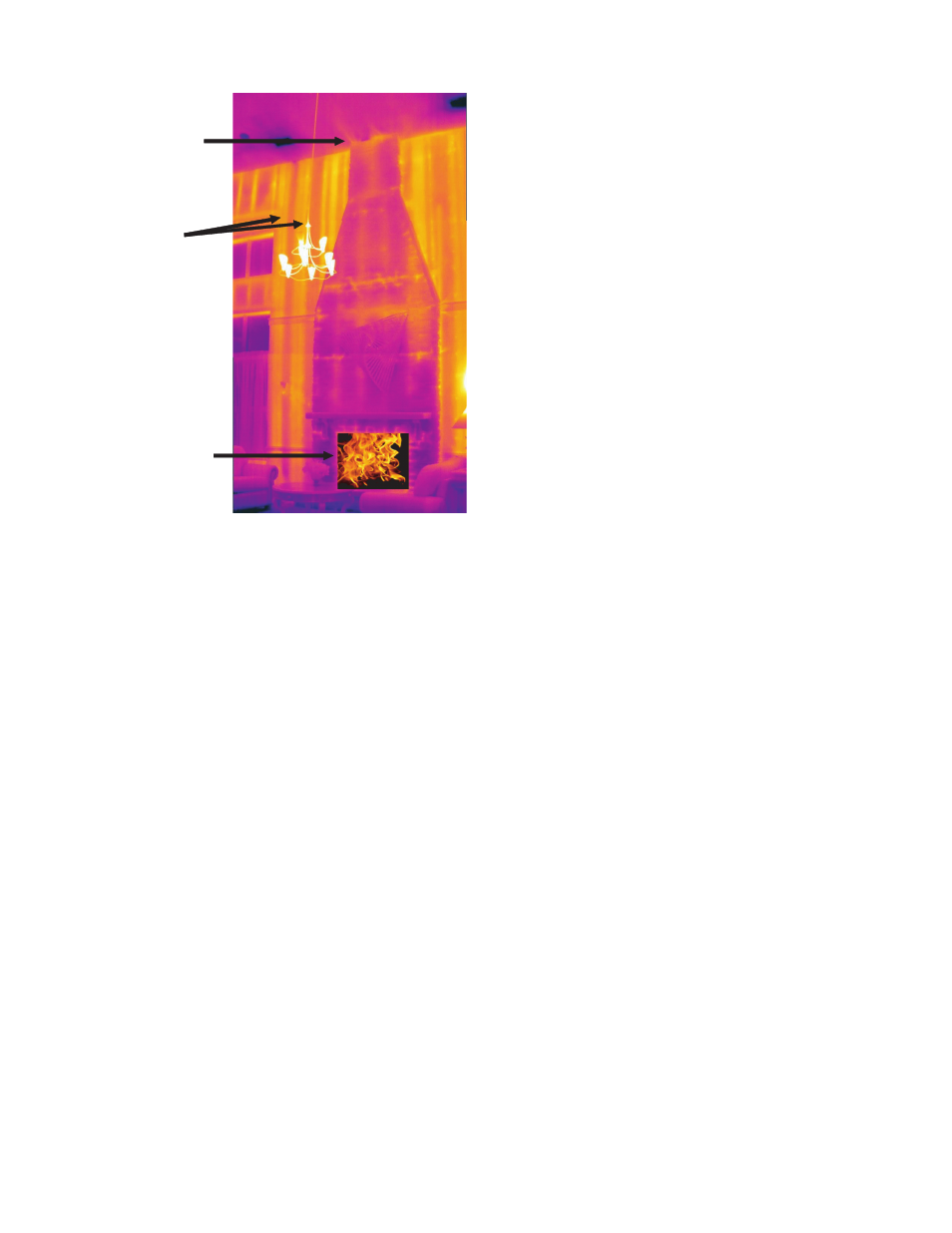Retrotec USACE User Manual
Page 343

Appendix G G13
Figure G11. The heat transfer as
seen from a fi replace. (Image from
BCRA.)
Thermal bridging
(conduction)
Air infiltration
(convection)
(Radiation)
In building science there are three basic controlling factors for these reactions:
heat fl ow, air fl ow, and moisture fl ow. Building envelopes consists of several parts
that differ by their intended performance. Those barriers are divided into heat,
air, moisture (bulk), and moisture (vapor), collectively referred to as HAMM.
Thermography is an excellent tool for evaluating the performance of
buildings and surveying facades. The heat barrier or insulation can be ob-
served as patterns on the envelope by changes in the conductive heat transfer
through the envelope. An air barrier or an air leak in the air barrier can be
observed from the convective heat transfer of the cooler or warmer air as it
moves over the building surface. The unique properties of water allow the IR
camera to detect evaporative cooling (see Figure G12) and trapped moisture
due to temperature difference from the high thermal capacity of the trapped
water.
Faults and defects in the building envelope can cause variations in normal
surface temperatures on structures, as well as undesirable airfl ow through the
structures, thus leading to moisture damage and increased energy consump-
tion. Heat and mass (mainly, moisture) transfer are the important factors in-
fl uencing the long-term durability of the structure and causing the building
damage. The attention has been focused on the performance of building enve-
lopes from the viewpoint of long-term durability.
The importance of heat transfer is critical for an energy effi cient building.
A common mistake is to use loose-fi ll fi berglass in the ceiling, expecting it to
block heat transfer into a vented attic system. Unfortunately, heat by convec-
tion is not effectively blocked in loose fi ll insulation (see Figure G13). Heat
transfer also occurs when insulation is uneven or is improperly installed (see
Figure G14).